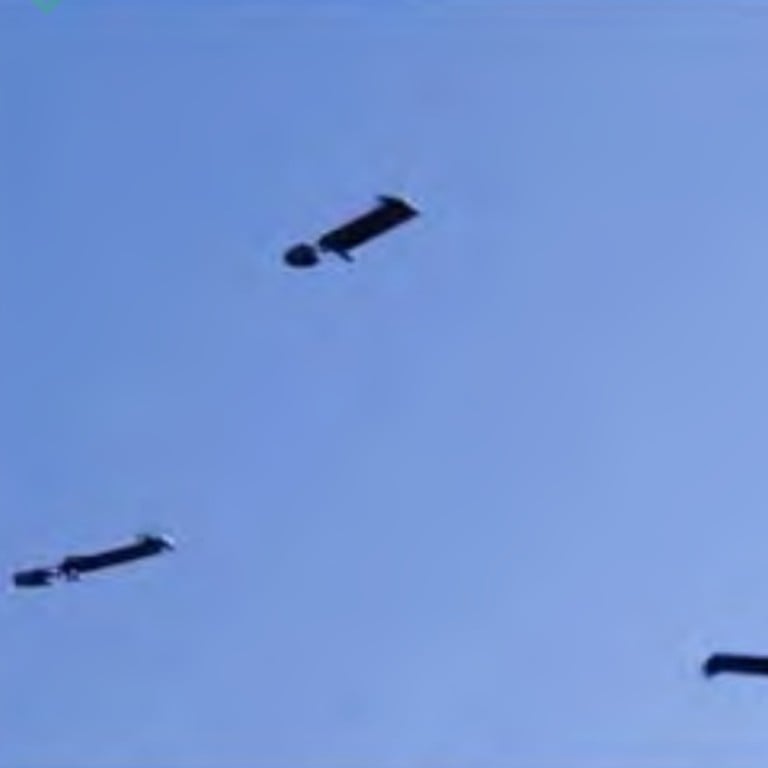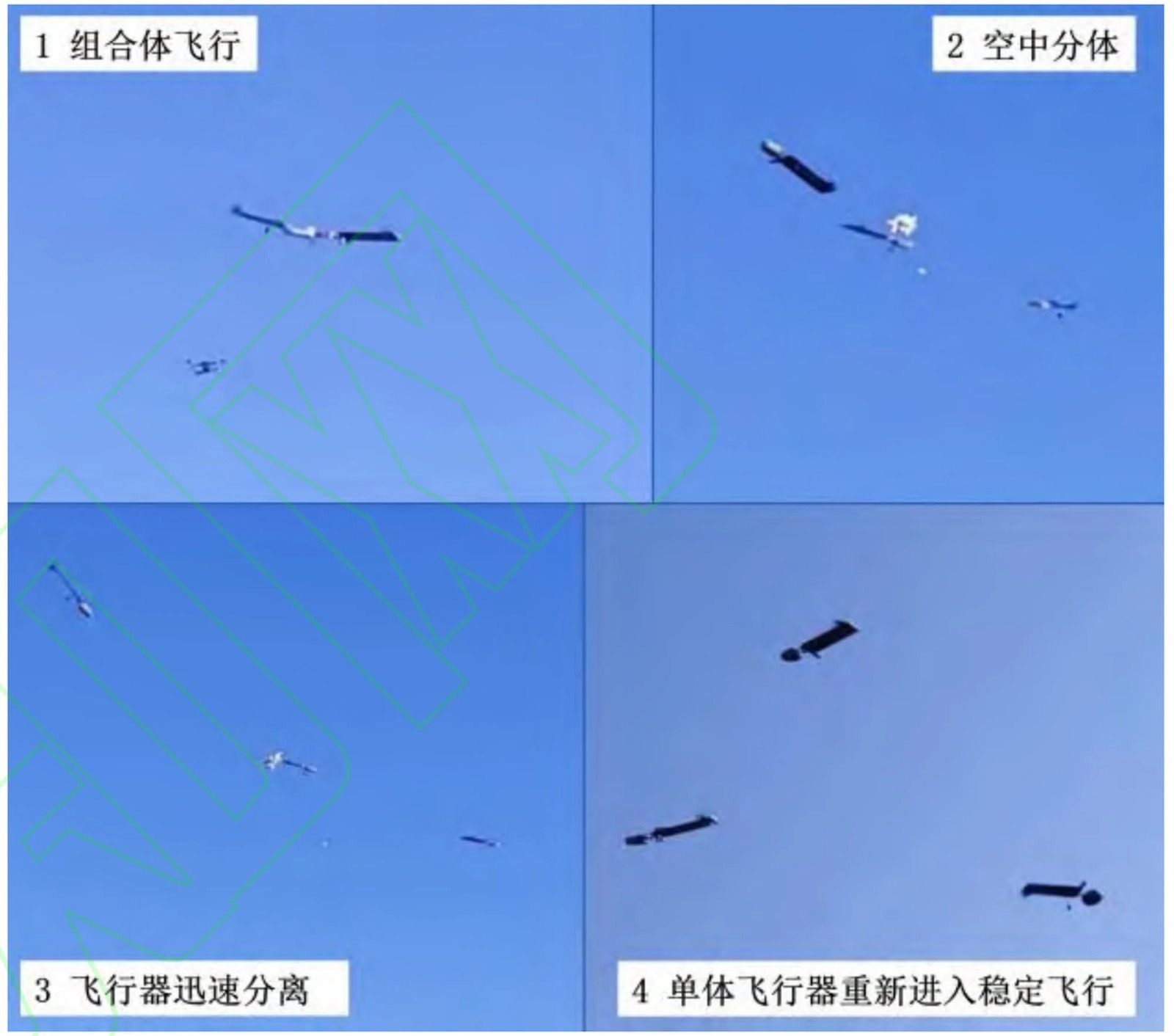As swarm drone technology gains prominence, Chinese scientists claim they have developed a new type of drone that can split into multiple units in the blink of an eye to create a tactical shock against an adversary.
At first glance, it appears to be a Chinese DJI multirotor of consumer quality. But once it enters the target airspace, it can instantly divide into two, three, or even six smaller drones, depending on what the situation, Hong Kong-based South China Morning Post claimed.
Despite having just one blade, each of these drones is capable of free flight and hovering, like a standard drone. They can interact with one another and work together to accomplish a goal by each taking on a certain duty, such as command, reconnaissance, tracking, or even attacking.
This research, headed by Professor Shi Zhiwei of Nanjing University of Aeronautics and Astronautics, represents a significant advancement in the field of air separation technology. It comes at a time when drone warfare is assuming increased significance, as seen in the ongoing Ukraine war.
Drone swarms have the potential to provide conventional forces with a significant tactical or operational advantage over their adversaries even before they engage in combat, provided they can be used to overwhelm and confuse military or security defense systems and permit conventional forces to enter a given area with relative ease.

China, like other advanced countries, has been working on swarm drone technology for several years. At the Zhuhai Air Show 2022, China showcased a light vehicle-mounted swarm launcher that can launch up to 18 drones at once.
In December 2017, during the Global Fortune Forum in Guangzhou, China achieved a global record when it managed to organize the biggest drone swarm ever. More than a thousand tiny drones carried out a range of activities to demonstrate how the high-tech instruments were all coordinated.
China has advanced past the first stages of the procedure after demonstrating its grasp of the secret to effective drone swarming.
Teams worldwide have been working for years to devise a workable and effective way to enable the splitting of drones in midair under supervision. China, on its part, claims to have aced it.
A Gamechanger, Say Chinese Researchers
In an ideal setting, air defense systems deploy anti-drone weapon resources and means in proportion to the number of drones detected when a drone swarm shows up on enemy radar screens.
If the drone swarm grows unexpectedly large, it may overwhelm the defense system and provide a psychological shock that may prevent opposing leaders and soldiers from mounting a strong defense.
However, Chinese experts have noted that combining regular drones resulted in a significant reduction in flight efficiency– a major hindrance to the advancement of this technology.
Last month, Shi’s team reported that it had successfully surmounted this obstacle in a peer-reviewed publication that was published in the Acta Aeronautica et Astronautica Sinica journal. According to the statement, the drone combination’s flight efficiency was almost twice as high as that of a multirotor drone of a similar size.
Together, these tiny drones were able to fly farther and faster than they could have separately. Their flying efficiency was more than 40 percent higher than that of conventional, tiny drones even after separation, marking the first instance in which combined drones may outperform single drones in any flight condition.
Chinese experts have iterated that the country is the world’s top manufacturer and designer of drones, with exceptional affordability and energy efficiency. According to the report published by Shi and his colleagues, combined design and air-separation technology provide the possibility to further enhance the effectiveness of drone use.

China’s arch-rival, the United States, has also been working on a similar technology. In 2012, researchers at the top US armaments manufacturer Lockheed Martin used the maple seed as inspiration to create a drone that could track targets steadily and capture high-definition images.
But its energy and cargo capacity prevented it from flying for long durations or handling difficult tasks by itself. The US team intended to transport these drones using big aircraft, but the expense and chance of being shot down were too high.
Although similar devices have since been created by various Western teams, none have demonstrated large-scale practical uses.
In contrast, Shi’s team says that drones modeled after maple seeds could be developed in labs and put into Chinese manufacturing facilities to transform combat in the future. However, to achieve effective long-distance flying, it is crucial to assemble them.
The team carried out in-depth wind tunnel testing to achieve this, and after multiple setbacks, they eventually discovered a blade form that enabled both combined flight and single flight efficiency.
Combining many single-blade drones results in a significantly different set of physical attributes and flight control logic compared to the well-known multirotor designs. The team had to create original flight control software and virtually build a physical model from scratch as a result.
As per Shi, another problem that surfaced was ensuring high-speed communication among the small drones.
Both the drones’ combined body and each one of them flew steadily throughout testing. When the combined body entered the target airspace, it could deploy mini drones so quickly that the opponent might not have time to realize what was going on, even though its maximum flight speed could not compete with that of some very capable military drones.
China’s People’s Liberation Army would have a bigger tactical advantage over its opponents, according to the experts, if a soldier carried many such modules and assembled varied functions and quantities of drones on the spot to perform tasks as needed.
China has intensified its drone research and manufacture since the start of the Russia-Ukraine war, aiming for technological innovations and unmatched affordability to be prepared for upcoming conflicts. However, some military analysts warn that China’s drone systems have not yet been put to the test in major conflicts, raising doubts about the strategy’s effectiveness.
- Contact the author at sakshi.tiwari9555 (at) gmail.com
- Follow EurAsian Times on Google News




